Investors' raging demand for safe assets over the past six months may have created a bubble in the Treasury market — and some onlookers expect to hear a bursting sound any minute now.
A market bubble exists when asset prices are driven well above their intrinsic value, as occurred with stocks in 1999 and housing prices in many parts of the country in 2006. Often the end of a bubble is marked by disruptively sharp price declines as investors abruptly conclude assets are overvalued.
There are mixed views about whether the recent buying spree in the Treasury market has driven prices up to unjustified bubble levels. The rally, which has also sent bond yields plunging to multiyear lows, was fed first by fallout from the subprime mortgage crisis and then by growing worries about a recession.
"I'm one who believes there is a bubble. Everyone has been focused on Treasurys because they are afraid of the alternatives," said Michael Metz, chief investment officer at Oppenheimer & Co. "It has nothing to do with the value of Treasurys, which are overvalued. The stampede has been because of fear."
I don't think we have a bubble in the Treasury market but I do believe the Treasury market is a bit "off" right now. First let's look at the multi-year charts of the Treasury market.
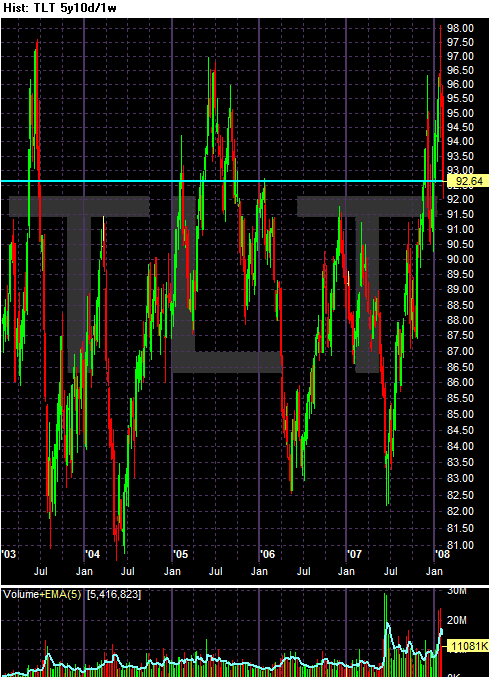
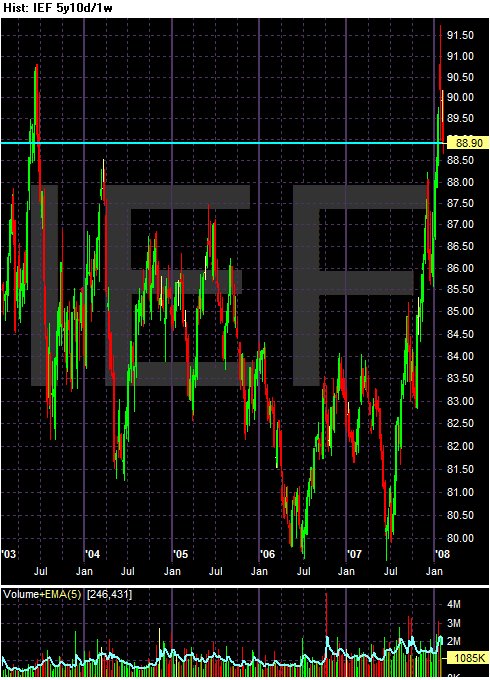
The TLTs (20+ year) and IEFs (7-10 year) are at levels not seen for about three years in the case of the TLTs and five years in the case of the IEFs. But while we have seen a big price spike over the last 6 months as a result of the credit crunch, prices aren't at historically at never-before seen levels.
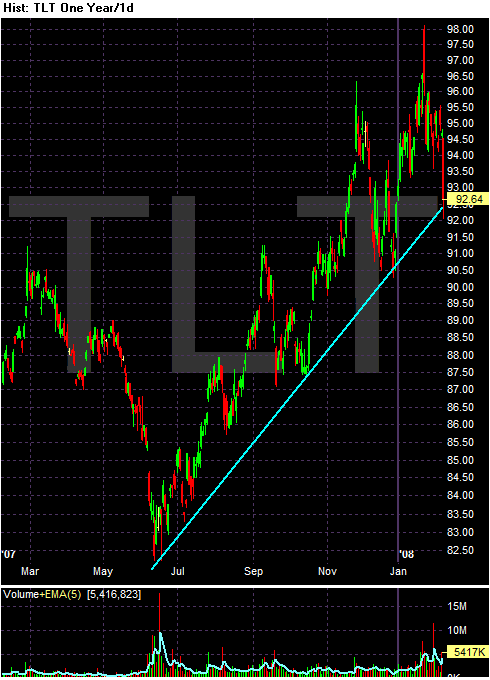

This is a 1-year chart of the TLTs and IEFs. Notice we are in a clear bull market pattern of higher lows and higher highs. These are very strong charts.
When I stated the bond market was a bit off, I was specifically thinking about inflation. As the post below indicates, there are plenty of reasons to think inflation is far from contained right now. Not only are various commodity prices high, money growth is very high. Here is a chart rom the St. Louis Fed of the year over year percentage change in MZM:
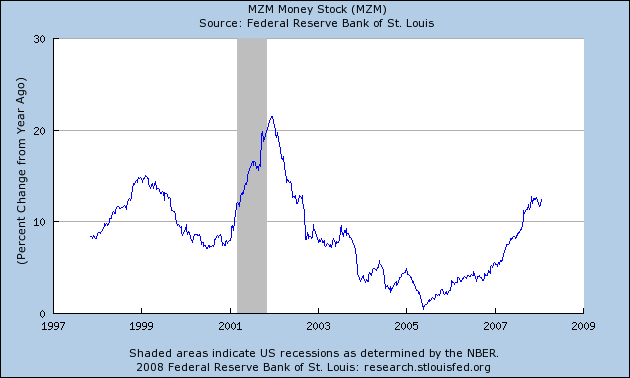
In short, Bernanke is earning his nickname "helicopter".
And then there is the year change in inflation:
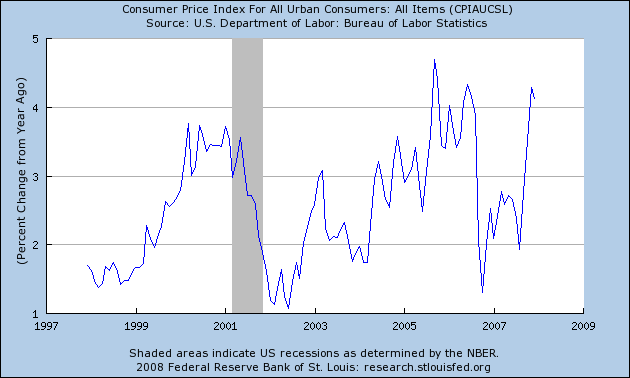
Clearly inflation is not where the Fed would like it to be. But it's also not where bond market investors want it either. Inflation eats away at the fixed rate of return on fixed income investment. While traders have ignored the higher inflation levels for now, I'm wondering how long that can last.
But it's also important to remember that Treasuries have a yield -- a fixed rate of return. This acts as a natural brake on a Treasury market rally. And it appears we may have reached it:
Treasuries tumbled after the government's $9 billion auction of 30-year bonds at the lowest yields ever chased away investors.
The longest-maturity U.S. debt fell the most since 2004 as bondholders concluded that yields were too low given the Federal Reserve's determination to cut interest rates and keep the economy out of a recession. Before the government's sale, investors expected a 4.41 percent yield, based on pre-auction trading. The bonds were sold at 4.449 percent.
``This is a massive boycott,'' said George Goncalves, chief Treasury and agency debt strategist in New York at Morgan Stanley, one of the 20 primary government securities dealers that are required to bid at Treasury auctions. ``We got a message that enough's enough.''
The yield on the new 30-year bond auctioned today rose to 4.51 percent as of 5 p.m. in New York, according to bond broker Cantor Fitzgerald LP. The yield on the previous benchmark bond due in May 2037 rose 16 basis points, or 0.16 percentage point, to 4.52 percent, the biggest one-day leap on a long bond since April 2004. The 2037 bond fell about 2 3/4, or $27.50 per $1,000 face amount, to 107 3/4.
So, traders have finally realized that after adjusting for inflation they're not getting that much of a return on their investment. That doesn't mean we're going to see a huge plummet in the Treasury market. They are still incredibly safe investments which is very attractive during turbulent times. However, it is possible that we have see a ceiling in bond prices for now.